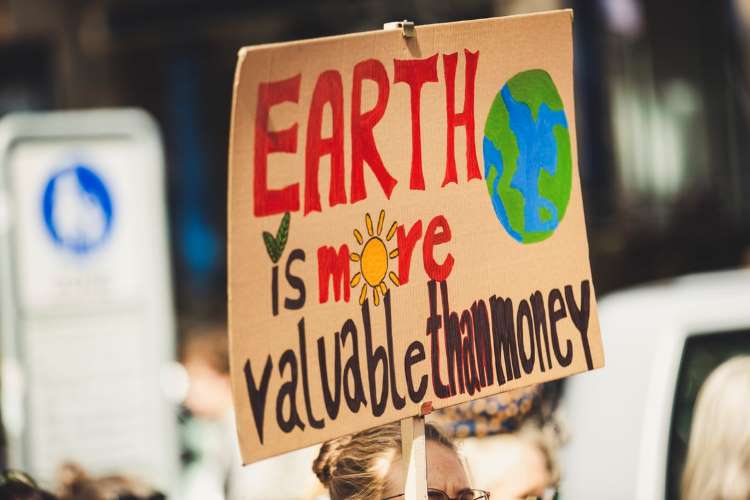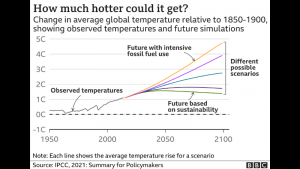
Climate change menace: As the world’s third largest carbon polluter, India has finally decided to amp up its existing climate targets meaning the country will work harder to curb its planet-warming emissions. New Delhi has committed to at least 45% reduction in emissions intensity of GDP, i.e, emissions per unit of GDP from 2005 levels. The target before was 33 to 35% reduction, a statement from the Environment Ministry said. This is in line with two of the promises made by Prime Minister Narendra Modi at the Glasgow conference last year.
While the promises sound good on paper, it is worth seeing how India is faring on its existing goals which will also provide a fair estimate of the probability of completion of its new goals. India is last in line of the world’s five largest emitters which announced new targets even while New Delhi falls only behind China and the United States in emissions. The country was previously condemned for its weakened stance on reducing coal reliance.
ALSO READ: Why curbing methane emissions is crucial in war on climate change
Last week, the Indian government nodded to the new national emissions pledges, known as Nationally Determined Contributions (NDCs). This also includes ensuring at least 50% of installed electricity generation capacity in 2030 would be based on non-fossil fuel-based sources, up from the existing 40% target. These NDCs have to be periodically finalised and submitted to the UN climate body by every country.
Other than the two mentioned NDCs, India had previously set a forestry target too, promising to create an additional carbon sink of 2.5 to 3 billion tonnes of CO2 equivalent by 2030. In Glasgow last year, PM Modi had made a series of new promises to strengthen climate action from India. However, only two of them have received official recognition, even while the others are also inter-linked, and progress on one would lead to corresponding progress on others. Other than this, PM Modi had also announced a net zero target for India by 2070 which is 20 years later than what climate scientists say is needed. Net-zero is achieved when a country’s greenhouse emissions are offset entirely.
How well is India doing on its previous goals?
India was already on its way to achieve the existing targets well before time. The new pledges do not come as a surprise as the government officials working on the previous targets also acknowledge that they were expecting new goals. On its existing target of cutting emission intensity to 33-35% from 2005 levels by 2030, the country has already achieved a 24% cut in 2016. This is estimated to have reached 30%.

The country has also outdone the goal of increasing the share of non-fossil fuels in installed electricity capacity. The aim was to achieve 40% while the progress achieved stands at 41.5% by the end of June in 2022, according to latest data from the Power Ministry. The progress of the existing aim to create an additional carbon sink via planting more trees is not clear.
To achieve its set goals, the country provides tax concessions and production linked incentive schemes so that carbon polluting industries and factories take steps at their end to reduce emissions. The updated framework for India’s transition to cleaner energy between 2021-2030 will also include such concessions and PLI schemes for promotion of manufacturing and adoption of renewable energy. This in turn will also provide an opportunity for enhancing manufacturing capabilities and exports, and is expected to lead to an increase in green jobs in renewable energy, clean energy industries.
ALSO READ: Co-operative sector: Kerala should revamp its scam-tainted credit societies
Hurdles in achieving new goals
While the country was already on the path of achieving its previous targets, meeting the newly promised goals will come with its own set of issues as achieving the same is heavily dependent on securing climate finance and technology from developed countries. According to media reports, government officials acknowledge that these targets will be difficult to fulfil in the absence of resources.
As to achieving other existing goals, the country has no clear projections of the carbon dioxide emissions expected till 2030. India had earlier pledged removal of at least one billion tonne CO2 which was expected to be equivalent to emissions to be done by 2030. However, the real numbers could actually be larger making the existing pledge meaningless without concrete figures. To put that into a bigger picture, it is estimated that India’s CO2 production will rise to 4 billion tonne per year which means by 2030, India may have emitted 35-40 billion tonne of CO2.
Curbing climate change first priority for governments
Tackling climate change must be number one on every government’s priority list as parts of the world continue to experience unprecedented weather anomalies. The phenomenon is not particular to one region and has been hitting all continents, from Europe to Asia to Australia. The summers were worse this year with even the countries which are not otherwise hot feeling the heat. Japan, Italy, Norway, Iran and Finland beat heat records this year while sudden thunders and jungle fires continue to raze America.
